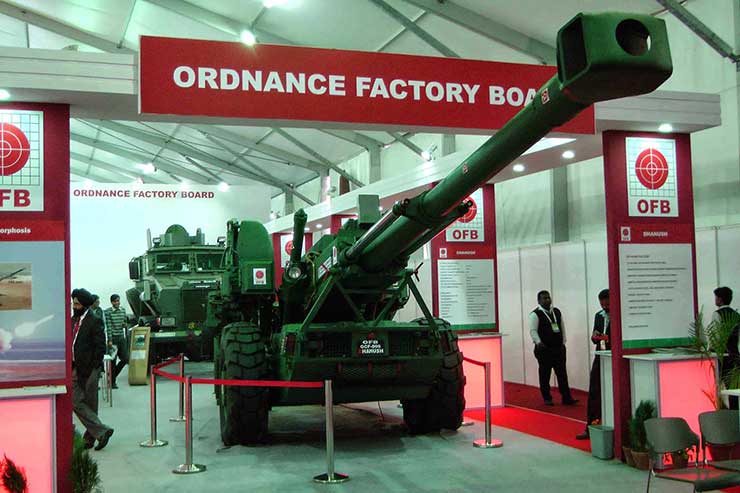
New Delhi. In a move aimed at reducing dependence on imports, the government has decided to corporatise ordnance factories as this would boost combat efficiency of the Armed Forces and increase the profitability of the entities for greater employment generation.
The Defence Ministry said the decision to convert state-administered arms factories, which function directly under the Ordnance Factory Board (OFB) headquartered in Kolkata, into public sector enterprises has been taken after considering recommendations of at least three committees formed in the past to examine their functioning.
The 41 ordnance factories employ around 82,000 people. On Wednesday, the factory workers’ 30-day strike against corporatisation entered its second day.
The factories are ‘captive centres’ manufacturing products, including tanks, armoured vehicles, artillery guns, small arms and ammunition apart from uniforms, tents and boots. Most have been in existence for more than 200 years and supply equipment only to the Army and different Paramilitary Forces under the Home Ministry.
Though sources claimed that the strike has the support of senior OFB officials, Bharat Pratiraksha Mazdoor Sangh (BPMS), one of the employees federations that has led the strike, informed that over 98 per cent of Group A officers in the OFB were not participating in it.
“Only about 5,000 deployed industrial workers from a total work force of over 76,000 were present on duty on Wednesday. The strike will continue till the government gives into our demand against corporatisation,” BPMS General Secretary Mukesh Singh said.
According to the government, the ordnance factories do not function in a competitive environment and have over the years been marred by issues pertaining to quality of products, high costs, lack of innovation and low productivity.
“The present structure of the board is inconsistent with the requirements of a production centre, which needs a lot of flexibility at the managerial and functional levels. It cannot compete with private industries that have all managerial and technical flexibilities required for production and marketing activities,” said a Ministry official.
With a structure not conducive to sustain itself in the market, sources said the government foresees the state-owned factories turning into white elephants in the near future unless emphasis is laid on private sector defence production under the ‘Make in India’ initiative.
Three different committees – the T.K.S. Nair Committee in 2000, the Vijay Kelkar Committee in 2004, the Raman Puri Committee in 2015 – have recommended overhauling the OFB in order to make the factories more competitive and market-oriented.
The committees suggested measures like giving Navaratna status to the OFB or splitting up the family of 41 factories to form three separate PSUs. The present dispensation is banking on the reports of these committees to go ahead with the corporatisation of the OFB.








